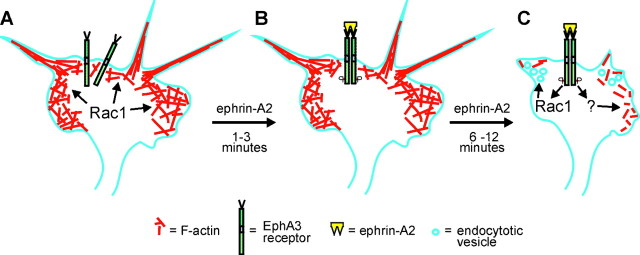Fig. 7.
Model of the dynamics of Rac1 function in an axonal growth cone. A, Axon extension requires polymerization of actin in the process of forming filopodia and lamellipodia. Actin polymerization is driven in part by Rac1 activity at the leading edge of the growth cone. B, Activation of EphA receptors after binding ephrin-A2 results in an initial loss of activated Rac1 and cessation of axon extension. C, Subsequently, Rac1 activity returns and mediates endocytosis of the plasma membrane and F-actin reorganization during collapse of the growth cone. Rac1 activity is required for growth cone collapse. Growth cone collapse also involves depolymerization of F-actin, a process that is independent of Rac1 activity.

